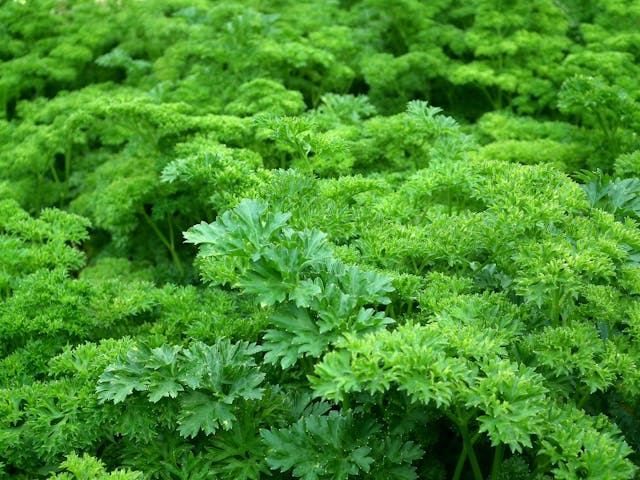Physical Address
304 North Cardinal St.
Dorchester Center, MA 02124
Physical Address
304 North Cardinal St.
Dorchester Center, MA 02124

A thriving vegetable garden provides fresh, homegrown produce packed with flavour and nutrients. While most vegetables require replanting every season, certain crops return year after year with minimal effort. These are called perennial vegetables—a gardener’s best-kept secret for sustainable, low-maintenance food production.
If you’re looking to reduce your workload while still enjoying bountiful harvests, perennial vegetables are a fantastic addition to your garden. They improve soil health, support beneficial insects, and even enhance your landscape’s beauty. In this guide, we’ll explore 20 perennial veggies you can plant once and harvest for years, along with their benefits and growing tips.
Once established, perennial vegetables require far less upkeep than annual crops. They are generally more resistant to pests, diseases, and adverse weather conditions. Unlike annuals, perennials don’t need to be replanted each season, saving you time and effort.
Many perennial vegetables produce food earlier and later in the season than annual crops. While you’re waiting for your annual seedlings to mature, your perennials will already be thriving and ready to harvest.
Perennials help build healthier soil by improving its structure and adding organic matter. Their deep root systems reduce erosion, retain moisture, and encourage beneficial soil organisms like fungi and bacteria.
Perennial vegetables offer more than just food. Many of them provide ornamental value, nitrogen fixation, ground cover, erosion control, and habitats for pollinators and beneficial insects.

A staple in perennial gardens, asparagus is a hardy crop that can thrive for decades. It prefers well-drained soil and full sun. Plant asparagus crowns in early spring, and while you’ll need to wait a couple of years for the first significant harvest, it will reward you with delicious spears every spring for years to come.
This lemon-flavoured leafy green thrives in cool weather and is excellent for soups, salads, and sauces. Young sorrel leaves have the best flavour. Plant in partial shade to prevent bitterness in warm weather.
A long-lived plant that can produce for over a decade, rhubarb thrives in well-drained, nutrient-rich soil. The tart stalks are commonly used in pies, jams, and sauces. Avoid eating the leaves, as they are toxic.
Belonging to the onion family, chives add a mild, onion-like flavour to dishes. They are hardy, easy to grow, and produce attractive purple flowers that attract pollinators.
This striking plant has edible flower buds and beautiful, fern-like foliage. Artichokes need full sun and well-draining soil. They thrive in mild climates but can grow annually in colder regions.
Grown for its pungent roots, horseradish is incredibly hardy. It prefers loose, well-draining soil to allow the roots to develop properly. Harvest in late autumn or early spring.
A perennial herb with a flavour similar to celery, lovage is easy to grow in well-drained soil. It thrives in both full sun and partial shade and can grow up to 7 feet tall.
All parts of the chicory plant are edible. It thrives in sunny locations and is commonly grown for its bitter leaves, which are popular in salads and coffee substitutes.
A semi-aquatic plant, watercress loves wet, shady areas. It has a peppery flavour and is highly nutritious. Regular watering is essential to keep it thriving.
While garlic is typically grown as an annual, certain varieties, like wild garlic, will return year after year. Once established, it will multiply and spread on its own.

Rich in vitamins, radicchio is a bitter leafy green that prefers cooler temperatures. It can be grown as a perennial in milder climates.
Unlike regular onions, these unique plants produce clusters of small bulbs at the top of their stalks, which eventually fall and root themselves, creating new plants.
A nitrogen-fixing vine that produces edible tubers, groundnuts thrive in moist soil. They require a trellis for support and offer a starchy, nutty-tasting root.
Also known as sunchokes, these sunflower relatives produce tubers that are harvested in autumn. They are incredibly resilient and can spread quickly if not contained.
Used to flavour teas and liqueurs, Angelica is a biennial or short-lived perennial. It prefers moist soil and partial shade.
In warm climates, peppers can be grown as perennials. In colder areas, they need to be overwintered indoors.
A shade-loving perennial, ostrich ferns produce edible fiddleheads in early spring. They require consistently moist soil.
This perennial kale relative produces edible shoots, leaves, and flowers. It thrives in sandy, well-drained soil and tolerates coastal conditions.
Unlike common beans, these vigorous vines can live for over 20 years. They produce edible pods, beans, flowers, and tubers.
A woodland perennial with a flavour blend of garlic and onions, wild leeks thrive in well-drained, loamy soil with partial shade.
Growing 20 perennial veggies you can plant once is a fantastic way to enjoy fresh, homegrown produce with less effort. These crops enrich your soil, support biodiversity, and provide reliable harvests year after year. Whether you have a large garden or a small backyard, adding a few perennials to your planting list will reward you for future seasons.
Which perennial vegetables do you grow in your garden? Share your experiences in the comments below and explore new things at Sow Haven!